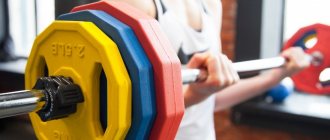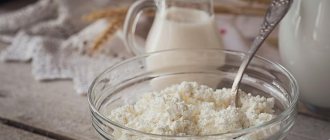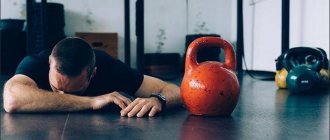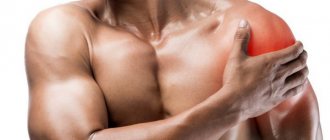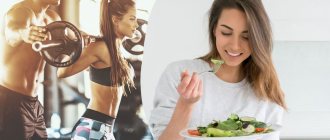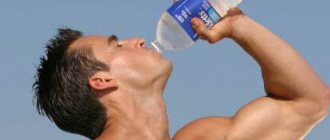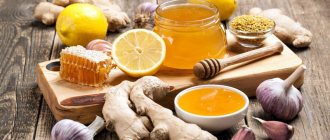Share:
When considering issues of an integrated approach to nutrition, one cannot ignore the most important point, namely, closing energy windows after training. Is it possible to eat carbohydrates after a workout, if so, what kind, if not, why? You will find answers to these questions in our article.
What foods are eaten after what types of workouts?
All training can be divided into two main types:
- Aerobic;
- Power.
Let's take a closer look at the question of which diet is suitable for each type of training.
Diet after aerobic exercise
The main goal of aerobic exercise in most cases is to lose weight or stay in shape. In this case, the diet should contain foods that contain fiber.
The diet a person consumes after aerobic exercise affects the body's recovery. Try to include the following products:
- Bran;
- Cabbage and green leafy vegetables;
- Berries;
- Fruits;
- Mushrooms;
- Legumes;
- Almonds;
- Cocoa;
- Figs
All these products contain a lot of fiber, which will help the body recover.
Diet after strength training
Strength training helps pump up the body's muscular system. To increase muscle mass, it is recommended to fill your diet with foods high in protein.
The diet should contain:
- Chicken and other types of lean meat;
- Low-fat cottage cheese;
- Kefir;
- Egg whites;
- Tofu, soy, beans;
- Red meat;
- Fish;
Any exercises that a person performs during training provoke muscle growth. Muscle mass will grow gradually and one of the main catalysts for growth will be recovery. During training, micro-tears occur in the muscle fibers, which subsequently heal and also increase muscle volume. Eating a diet containing protein will help speed up the healing process and speed up muscle gain.
Types of proteins
Not only after, but also before training, whey protein is considered the best type, as it has high digestibility.
However, this does not mean that other types of protein are not useful - casein protein is perfect for taking before bed, as it is slowly digested and long-lasting, ensuring a gradual supply of amino acids to muscle tissue.
You can learn in detail about other equally useful types of protein here.
Eating enough protein is a must for gaining and subsequently maintaining muscle mass!
When can you eat after strength training?
After training, eating should be no earlier than 30-40 minutes later. During this time, the body uses your fat deposits and internal reserves as nutrients, which helps with weight loss and staying in shape. If you start eating immediately after training, the effect will be minimal.
After your first protein meal 40 minutes after training, you need to eat a full meal in the next 2 hours.
Drinking Carbs Is a Good Strategy
If you are participating in a competition that lasts about an hour, simply rinsing your mouth with sweetened water will help you feel energized. If you run (swim or pedal) for more than 2 hours, it is better to drink isotonic drinks (drinks containing 4 to 8 g of carbohydrates per 100 ml of water).
It is necessary to ensure the intake of at least 30 g of carbohydrates per hour, this amount can be increased depending on the duration and intensity of physical activity.
If your marathon lasts more than 3 hours and you are working intensely, your carbohydrate intake should be increased to 90g per hour. But the rate of absorption of carbohydrates from the intestines is limited. No more than 60 g of one type of monosaccharide (glucose, fructose, etc.) will enter the bloodstream per hour, the rest will simply be excreted. Therefore, to get more than 60 g of carbohydrates per hour, use mixtures of monosaccharides, these can be either gels, isotonics, or simply dried fruits.
The strategy for consuming carbohydrates - how much and in what form - needs to be worked out during training, since some foods cause athletes to feel full, bloated, and even diarrhea. Any of these unpleasant moments will reduce your effectiveness.
What can't and can't be eaten after training?
Let's take a closer look at what foods you can eat after training and what foods are not recommended at all.
What is possible
- Dairy products. Protein synthesis in the muscles will accelerate if you eat foods containing milk after exercise. Yogurt, kefir, low-fat cottage cheese are suitable;
- Eggs. Boiled or fried eggs, as well as an omelet, are good post-workout snack options. The yolk contains substances that catalyze muscle growth;
- Complex carbohydrates. During intense physical activity, it is recommended to consume complex carbohydrates, this will help the body tolerate stress more easily;
- Healthy fats. You shouldn’t lean heavily on fatty foods, but foods with a low percentage of healthy fats can be included in your diet;
- Protein shake – if you want to gain muscle mass.
What not to do
- It is better to replace food fried in oil with other dishes prepared in a more gentle manner, baked or boiled;
- It is not recommended to abuse simple carbohydrates at night. Watch the amount of sweet foods and fruits you eat in the afternoon;
- Complex carbohydrates are recommended to be consumed before lunch, in the first half of the day. This will help recharge your energy for the whole day, since their breakdown inside the body occurs gradually;
- Foods high in sugar can ruin your efforts during exercise. Try not to eat sweets, chocolate, cookies, marmalade and sweet carbonated water after training;
- Fast food is also not an option. Increases cholesterol in the blood, increases the risk of developing liver and vascular diseases;
- It is better not to consume raw vegetables and fruits after training. The body will spend a lot of energy processing them, much more than it receives from their consumption.
Examples of foods you can eat after training:
- Fish dishes with vegetable salads;
- Boiled chicken breast with a side dish of buckwheat or rice;
- Scrambled eggs with peppers and tomatoes;
- Oatmeal and other porridges with toppings in the form of nuts;
- Pancakes stuffed with berries, fruits or cottage cheese;
Why protein is so important
PROTEIN – also known as protein, it consists of nutritional amino acids at the molecular level. This is the main building material for creating muscle fibers.
To form protein, the body needs a set of 21 amino acids. The body synthesizes 12 on its own, but can only obtain 9 from food.
It is these 9 amino acids that include the following, which are called “essential”:
- lysine;
- leucine;
- isoleucine;
- lecin;
- methionine;
- tryptophan;
- threonine;
- phenylalanine;
- valine
Therefore, the main reason for obtaining protein from food is precisely the essential amino acids that the body needs to build muscle tissue and their further construction.
During physical activity, much more protein is needed, but this does not mean that it is not needed for those who have a predominantly sedentary lifestyle. According to recent scientific studies, reduced protein intake leads to loss of muscle mass.
An increase in lean body mass is observed when protein synthesis is at a level higher than protein breakdown. In other words, it is also called positive protein balance. If the process is reversed, protein breakdown occurs faster than synthesis, a decrease in muscle mass is observed under the influence of catabolic processes and the main destroyer hormone - cortisol.
In ordinary life, there is balance, so muscle volumes are at the same level and there is no significant change in muscle mass.
Athletes who train in the gym without observing significant changes in body weight actually gradually reduce it over time under the influence of physical activity. Under the influence of constant heavy loads, only the hormone testosterone is activated, but also its main competitor in gaining muscle mass, cortisol. If the amount of protein food is not normal, then the catabolic processes of muscle tissue destruction begin to predominate.
Strength training is 30% of all success, 70% is formed in the kitchen!
If it is not possible to obtain amino acids and protein in the required quantities from regular food, pay attention to sports nutrition, which, although more expensive than natural food, contains a full range of all necessary nutrients.
Proper nutrition during sports
As mentioned above, physical activity without proper nutrition greatly loses its effectiveness. Below are the basic rules that will help you determine your diet and recover after exercise.
Follow your diet
Eating should be no later than 2 hours before training and no earlier than 30 minutes after training. You should not fast before or after training. The body needs a supply of nutrients and microelements. A small post-workout snack is a good way to give your body a quick source of energy. Then, after a couple of hours, you need to take a full meal.
Don't forget to drink water
During intense exercise, the body loses a lot of fluid. You need to replenish the water and mineral balance in the body and prevent dehydration. During training, you can drink a small amount of liquid, and after training, you can completely replenish the losses.
A good option would be mineralized water - it will simultaneously quench your thirst and replenish your mineral balance.
Snacks
A quick meal 30-40 minutes after exercise is called a snack. The best foods for them are those that quickly restore energy: bananas, cereal bars, fruit purees, juices.
Protein intake
Muscles need protein to recover. Add protein foods to your diet, regardless of the type of exercise you receive. In the morning, a good option would be omelet or eggs, which contain protein that helps muscles recover faster. For dinner, you can eat fish rich in protein and omega-3, such as salmon.
Drinks, supplements and protein shakes
A person cannot always get the required amount of vitamins, dietary supplements and microelements from regular food. In this case, various dietary supplements and protein shakes come to the rescue.
For those who are intensely involved in strength sports and want to pump up their body faster, you can try adding a protein shake to your diet. You can buy the powder version, or you can make it from natural products at home. You will need milk, banana, yogurt and oatmeal.
Glucose
Our body can use glucose very efficiently, unlike fats. Replenishment of ATP reserves with glucose occurs in two ways - with the participation of oxygen (aerobic glycolysis) and without oxygen (anaerobic glycolysis occurs at a higher rate than aerobic glycolysis). But glucose supplies, as mentioned above, are limited.
Glucose enters the body with food, not only with sweets (simple carbohydrates), but also in the form of complex carbohydrates - starches from cereals, legumes and nuts. The glucose reserves made by our body in advance are also used. These reserves are stored, as in plants, in the form of starch, but in mammals this starch is called glycogen.
Glycogen is a complex carbohydrate consisting of many glucose molecules.
The glycogen molecule has a more branched structure than starch and contains fewer glucose molecules. Glycogen is stored in muscles and liver. When glucose does not enter the bloodstream from food, the process of breakdown of glycogen into glucose begins - glycogenolysis. Working muscles take glucose directly from the glycogen they contain.
Subscribe to “Marathon Man” on Telegram. Announcements of articles and useful selections every week.
Glycogen stored in the liver (100-120 g in an adult) is used to maintain a constant level of glucose in the blood. But these reserves are by no means unlimited, and they last on average for 2 hours. As soon as glycogen reserves come to an end, heaviness appears in the muscles and performance decreases.
Glucose is simply necessary for our brain cells. They take up glucose directly from the bloodstream (without the participation of insulin, as myocytes and other cells of the body do), this process is almost constant, so when the level of glucose in the blood drops, the brain begins to “sound the alarm” - weakness, dizziness and a strong desire to eat something appear. something sweet.
The limited supply of glycogen (essentially glucose) ensures that the marathon runner will inevitably encounter the “marathon wall”.
Summary: To work, muscles need to recover ATP from ADP using glucose, which is stored as glycogen in the muscles and liver.
What to eat after training if you are losing weight?
The main principle of losing weight is to consume fewer calories than you burn. In order to maintain this balance, it is worth eliminating high-fat foods from your diet and reducing the number of calories you consume.
Here is a list of the best foods that you can and should eat after training when losing weight:
- Boiled chicken contains amino acids and easily digestible protein. Helps quickly restore muscle tissue, and due to B vitamins, accelerates metabolism;
- Turkey is rich in protein, contains vitamins A, E and microelements. Improves the process of fat breakdown;
- Seafood – the content of amino acids, vitamins and minerals makes seafood almost irreplaceable. Accelerate metabolism, improve fat removal, stabilize the functioning of the cardiovascular system;
- Rice is a source of complex carbohydrates, vitamin B and minerals. Saturates the body, eliminating the feeling of hunger;
- Beans are a low-calorie product with a high protein content, about 22 grams per 100 grams of product;
- Low-fat cottage cheese is a good option for restoring muscle tissue. Contains natural protein;
- Mineral water, freshly squeezed juice, green tea without sugar - all this is suitable as a source of liquid.
- Turkey pilaf
